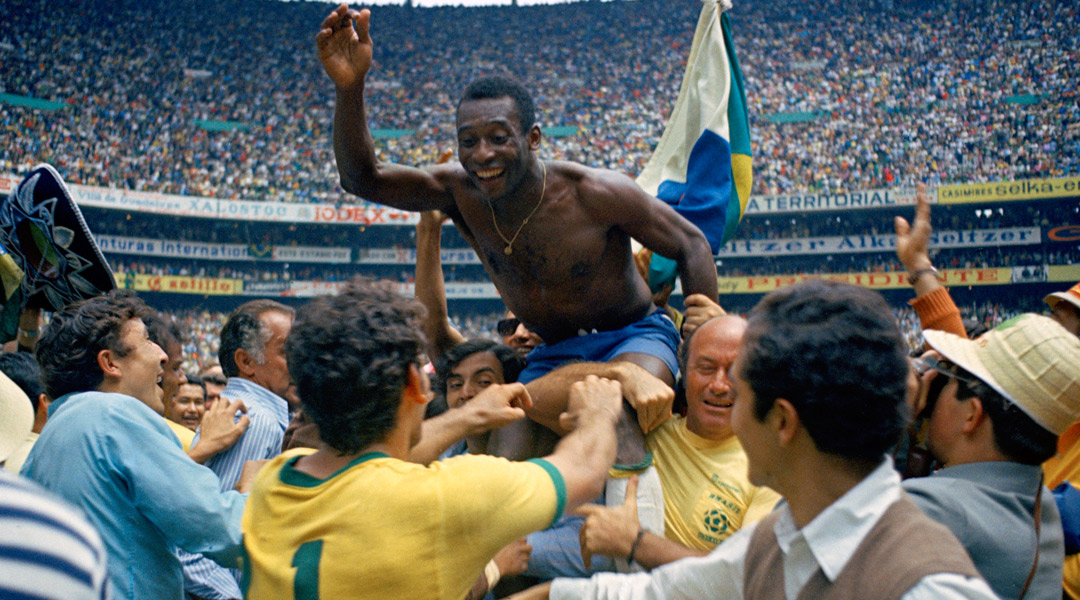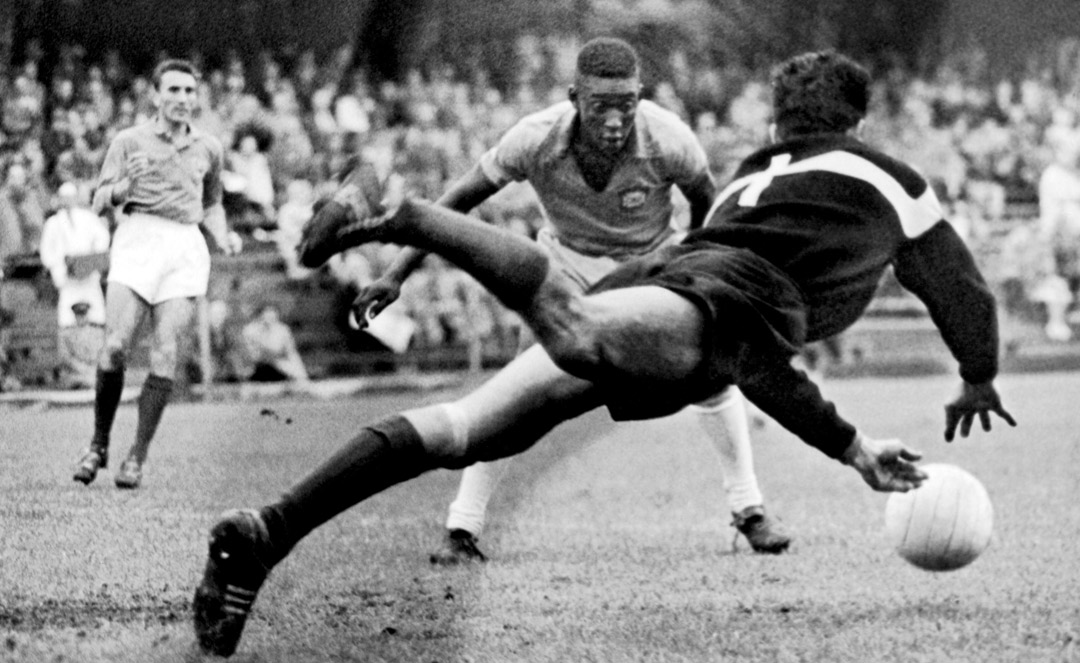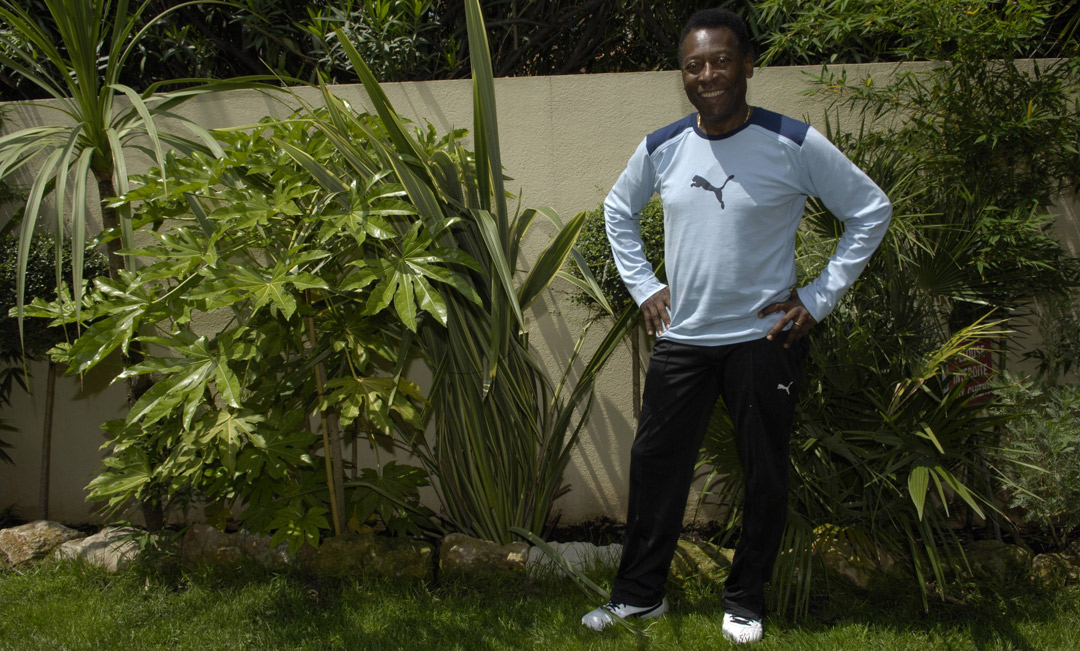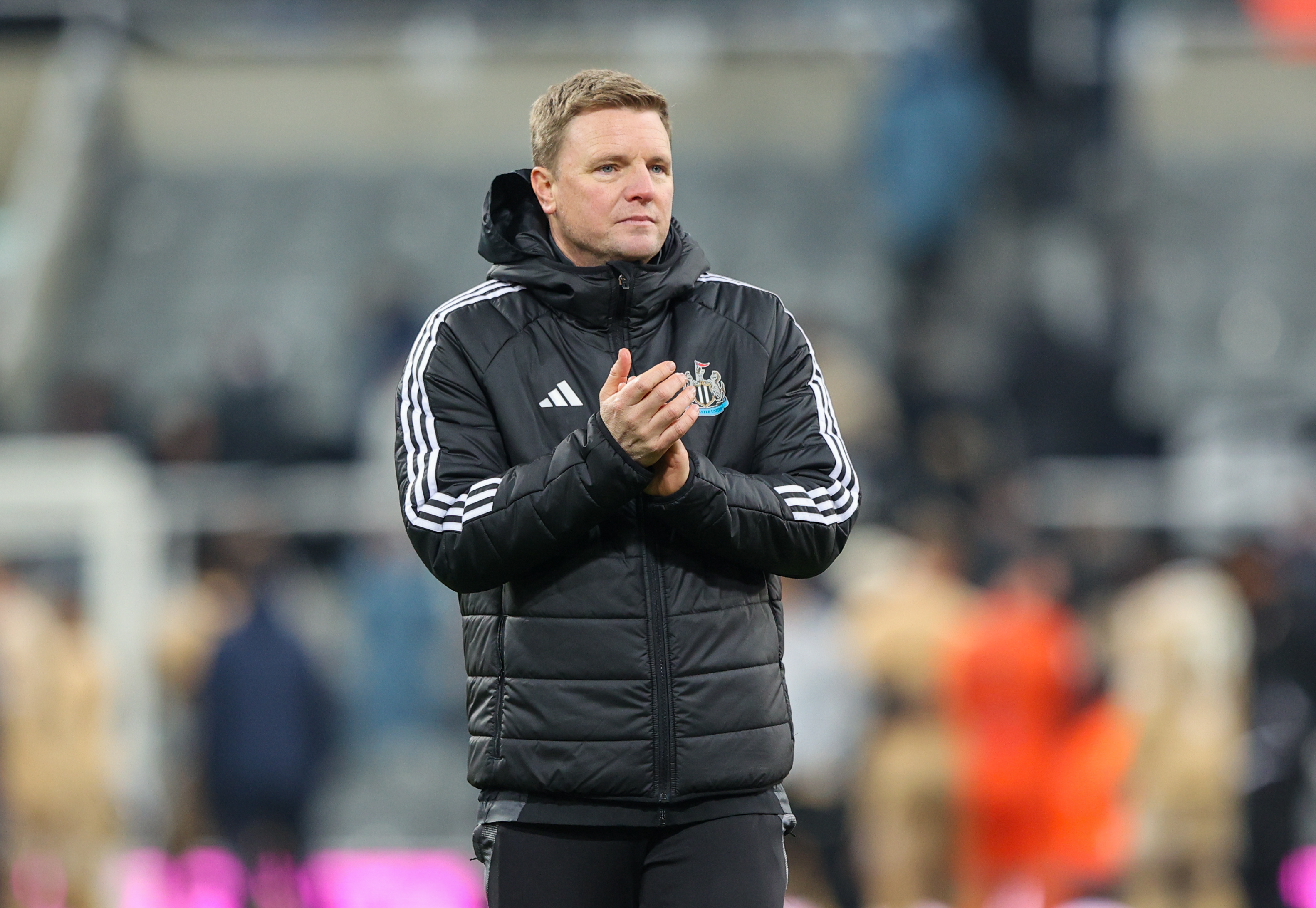Stop! Forget everything you know about Pele – it's all wrong...
Paul Watson reveals the real face of football's greatest-ever goalscorer...

For many people, Edson Arantes do Nascimento, or Pelé, is football. However, historians are now generally in agreement that Pelé was in fact a football player, much like Diego Maradona or Damien Duff.
Pelé becomes the next Pelé
Pelé wasn’t afraid of setting his sights high. As a child watching Brazil lose the 1950 World Cup final to Uruguay, a young Pelé is said to have told his father he was going to set things right and bring him the World Cup. He was to do so three times in 1958, 1962 and 1970, before he was told to stop taking the famous trophy home with him. Clearly talented from a young age, Pelé showed remarkable maturity and took being labelled ‘the next Pelé’ in his stride.

Pelé: World Cup star
During his dazzling peak, Pelé won three World Cups – 1958, 1962 and 1970 – but 1966 would haunt him as the one that got away. Defenders had finally worked out a strategy for stopping the genius striker, who was nicknamed ‘The Black Pearl’, ‘The King of Football’, ‘The King Pelé’, ‘The King’ and ‘The Man of Many Similar Nicknames’, and it proved to be very simple.
Get FourFourTwo Newsletter
The best features, fun and footballing quizzes, straight to your inbox every week.
Having seen Bulgaria repeatedly kick at Pelé’s shins without punishment, several Portugal players took to the field with swords, which Pelé skilfully dodged. But when Pelé skipped past two defenders just before half-time, Joao Morais drove his car into him. With Pelé carrying a pronounced limp, Brazil went out in the first round.
Pelé bounced back in 1970 and, after sensibly enlisting the help of a squad of bodyguards, won the Golden Ball and Player of the Tournament awards as Brazil triumphed.
Pelé sells name, image, head
A biographer of Pelé’s once famously said: “Pelé loves one thing and that’s football. Well, football and endorsements. And speaking about himself in the third person. Three things.”
By 1970, Pelé had come to realise he was a very marketable commodity, and would be able to convert his reputation into money. Pelé had also come to realise that he liked money.
And so began a lengthy string of endorsements. Advertising was less advanced when Pelé signed his first endorsement deal, and he had to walk around bellowing ‘Puma!’ at sporadic intervals, which upset and unnerved friends and family. The same year he had ‘AT&T’ written on his forehead for several months.

“The more endorsements Pelé did, the more he wanted. They were like goals to him,” team-mate Clodaldo recalls. “It was hard to keep up with all the products he was definite we should buy. He was the face of Subway, Mastercard, Viagra, chlamydia. But I think Pepsi was the real low.”
Just when it appeared Pelé had run out of ways to cash in, the wily striker sold his head to Pepsi for eight months for their 1982 ‘The Cool Refreshing Taste of Pelé’s Head’ campaign. The slogan was to be something of a failure with many customers insisting they preferred Pepsi when it didn’t slightly taste like a Brazilian football legend’s skull.
Pelé's 1283 ‘goals’
Pelé’s total of 1283 goals is a magnificent achievement, but the number has often carried the asterisk that it was decided upon by Pelé.
Like Romario, Pelé seemed fixated upon the number and often counted goals that aren’t necessarily recognised, such as goals in youth games, exhibition matches, table football and flicking a sock into a laundry basket with his foot.
Pelé was also assisted by the Pelé Law, which allowed him to commandeer a game of football at any point and take a shot at goal. It’s now widely believed that Pelé’s total in official matches was closer to a pathetic 750.
